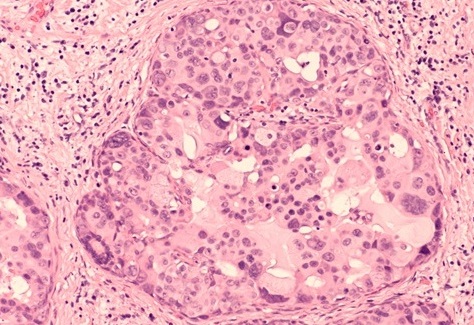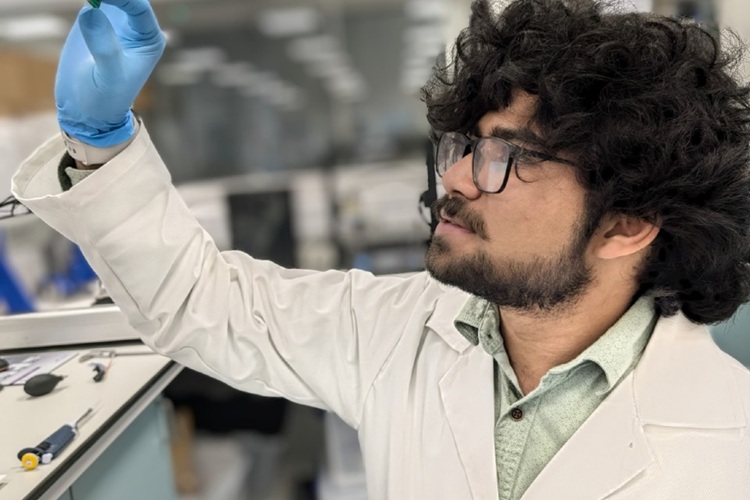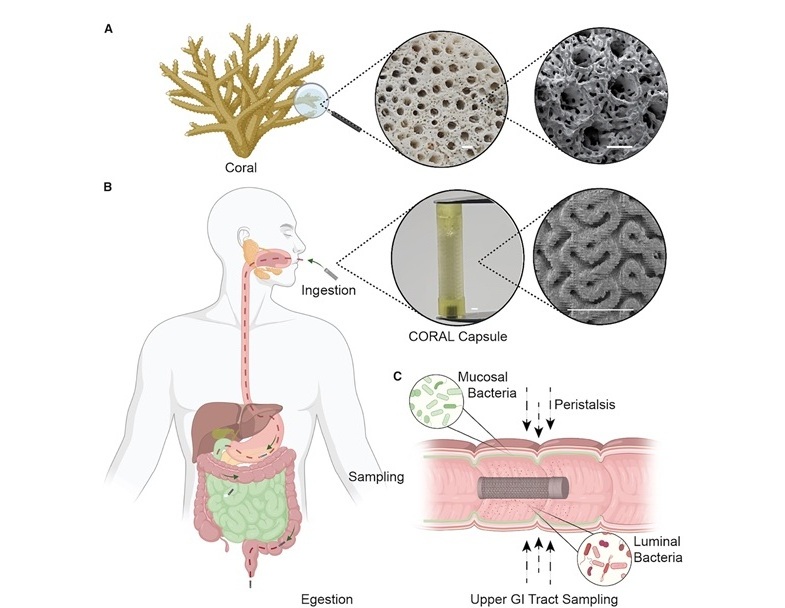New Lab Testing Procedure Specifically Identifies SARS-CoV-2 Neutralizing Antibodies
|
By LabMedica International staff writers Posted on 20 Oct 2020 |
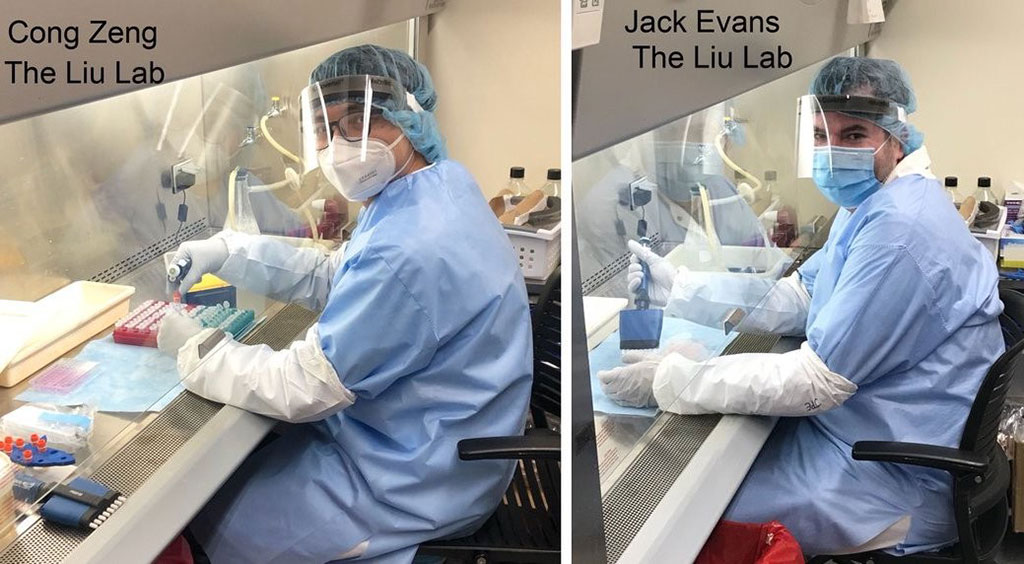
Image: Cong Zeng and Jack Evans were first authors of a paper describing a new assay that detects neutralizing antibodies against SARS-CoV-2 (Photo courtesy of Ohio State News)
Scientists have developed a new lab testing procedure for the detection of antibodies against SARS-CoV-2 that gives results more quickly than existing assays and specifically identifies so-called “neutralizing” antibodies - those that protect by blocking infection of cells.
Knowing that a person has developed antibodies against the SARS-CoV-2 virus after recovering from COVID-19 doesn’t tell everything about his/her immunity. The levels and even types of antibodies can differ among patients, and those differences can influence whether a person is protected against being reinfected. Scientists at The Ohio State University (Columbus, OH, USA) developed what is called a “pseudotype” virus neutralizing antibody assay, in which an HIV vector and core is coated with the SARS-CoV-2 spike protein to detect antibodies against the coronavirus. The team applied a new approach by selecting a different form of light-producing enzyme that can be detected conveniently in culture media containing the virus-infected cells. That choice saved several steps, and time, in the detection process without losing accuracy and sensitivity to the target virus.
The team analyzed 221 patient blood samples to validate the effectiveness of the assay and verify that the detection test could be scaled up for widespread screening. The results showed that, in general, hospitalized patients - and ICU patients in particular - had the highest concentrations, or titers, of neutralizing antibodies in their systems. However, over 14% of those who had been hospitalized had no or very low levels of antibodies. Among the health care professionals, 40% were negative for neutralizing antibodies and 36% had low concentrations. And more than half of the convalescent blood donors had concentrations of antibodies that were too low to qualify them as donors for treatment of COVID-19 patients. The assay detected no SARS-CoV-2 antibodies in the samples from people who had been sick with other types of respiratory diseases. The test accuracy was further validated by verifying in a lab setting that the antibodies detected in the COVID-19 patient blood samples did in fact neutralize the authentic SARS-CoV-2 virus. It won’t be long before the assay is put to a larger test.
“With many assays currently in use, we can detect antibodies, but that doesn’t tell us if they’re neutralizing antibodies. We only know the level of antibodies someone has,” said Shan-Lu Liu, professor in the Ohio State College of Veterinary Medicine’s Department of Veterinary Biosciences and the senior author of a new journal article describing the assay. “Some antibodies might be protective, some might not be protective, and some might even enhance infection – we know with this type of coronavirus and some other viruses, some antibodies can even do harm,” he said. “Our assay examines whether antibodies are potentially protective, which means they prevent a patient from reinfection and block viral replication. That’s the outcome of infection that we want people to have.”
Related Links:
The Ohio State University
Knowing that a person has developed antibodies against the SARS-CoV-2 virus after recovering from COVID-19 doesn’t tell everything about his/her immunity. The levels and even types of antibodies can differ among patients, and those differences can influence whether a person is protected against being reinfected. Scientists at The Ohio State University (Columbus, OH, USA) developed what is called a “pseudotype” virus neutralizing antibody assay, in which an HIV vector and core is coated with the SARS-CoV-2 spike protein to detect antibodies against the coronavirus. The team applied a new approach by selecting a different form of light-producing enzyme that can be detected conveniently in culture media containing the virus-infected cells. That choice saved several steps, and time, in the detection process without losing accuracy and sensitivity to the target virus.
The team analyzed 221 patient blood samples to validate the effectiveness of the assay and verify that the detection test could be scaled up for widespread screening. The results showed that, in general, hospitalized patients - and ICU patients in particular - had the highest concentrations, or titers, of neutralizing antibodies in their systems. However, over 14% of those who had been hospitalized had no or very low levels of antibodies. Among the health care professionals, 40% were negative for neutralizing antibodies and 36% had low concentrations. And more than half of the convalescent blood donors had concentrations of antibodies that were too low to qualify them as donors for treatment of COVID-19 patients. The assay detected no SARS-CoV-2 antibodies in the samples from people who had been sick with other types of respiratory diseases. The test accuracy was further validated by verifying in a lab setting that the antibodies detected in the COVID-19 patient blood samples did in fact neutralize the authentic SARS-CoV-2 virus. It won’t be long before the assay is put to a larger test.
“With many assays currently in use, we can detect antibodies, but that doesn’t tell us if they’re neutralizing antibodies. We only know the level of antibodies someone has,” said Shan-Lu Liu, professor in the Ohio State College of Veterinary Medicine’s Department of Veterinary Biosciences and the senior author of a new journal article describing the assay. “Some antibodies might be protective, some might not be protective, and some might even enhance infection – we know with this type of coronavirus and some other viruses, some antibodies can even do harm,” he said. “Our assay examines whether antibodies are potentially protective, which means they prevent a patient from reinfection and block viral replication. That’s the outcome of infection that we want people to have.”
Related Links:
The Ohio State University
Latest COVID-19 News
- New Immunosensor Paves Way to Rapid POC Testing for COVID-19 and Emerging Infectious Diseases
- Long COVID Etiologies Found in Acute Infection Blood Samples
- Novel Device Detects COVID-19 Antibodies in Five Minutes
- CRISPR-Powered COVID-19 Test Detects SARS-CoV-2 in 30 Minutes Using Gene Scissors
- Gut Microbiome Dysbiosis Linked to COVID-19
- Novel SARS CoV-2 Rapid Antigen Test Validated for Diagnostic Accuracy
- New COVID + Flu + R.S.V. Test to Help Prepare for `Tripledemic`
- AI Takes Guesswork Out Of Lateral Flow Testing
- Fastest Ever SARS-CoV-2 Antigen Test Designed for Non-Invasive COVID-19 Testing in Any Setting
- Rapid Antigen Tests Detect Omicron, Delta SARS-CoV-2 Variants
- Health Care Professionals Showed Increased Interest in POC Technologies During Pandemic, Finds Study
- Set Up Reserve Lab Capacity Now for Faster Response to Next Pandemic, Say Researchers
- Blood Test Performed During Initial Infection Predicts Long COVID Risk
- Low-Cost COVID-19 Testing Platform Combines Sensitivity of PCR and Speed of Antigen Tests
- Finger-Prick Blood Test Identifies Immunity to COVID-19
- Quick Test Kit Determines Immunity Against COVID-19 and Its Variants
Channels
Clinical Chemistry
view channel
VOCs Show Promise for Early Multi-Cancer Detection
Early cancer detection is critical to improving survival rates, but most current screening methods focus on individual cancer types and often involve invasive procedures. This makes it difficult to identify... Read more
Portable Raman Spectroscopy Offers Cost-Effective Kidney Disease Diagnosis at POC
Kidney disease is typically diagnosed through blood or urine tests, often when patients present with symptoms such as blood in urine, shortness of breath, or weight loss. While these tests are common,... Read moreMolecular Diagnostics
view channel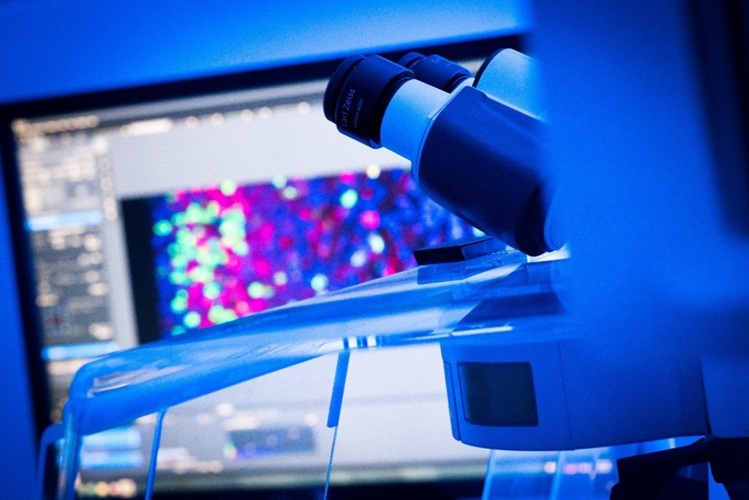
Groundbreaking Tool Improves Genetic Testing Accuracy
Genetic testing plays a crucial role in diagnosing disease, but its accuracy depends heavily on understanding how common certain genetic variants are across populations. Most current databases calculate... Read more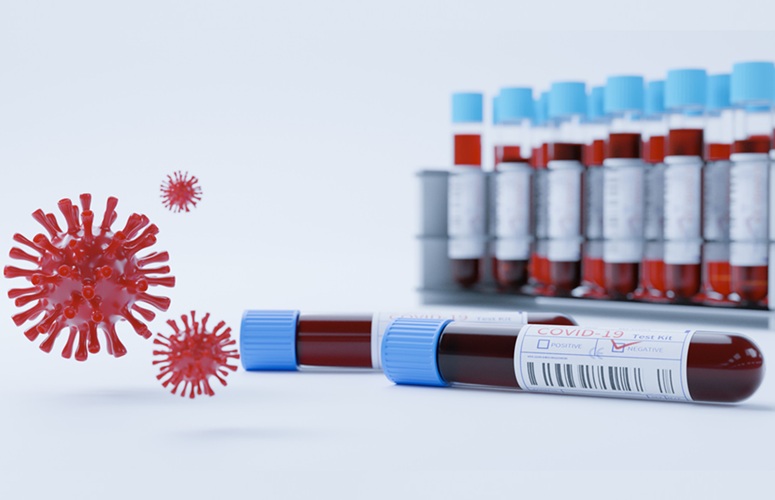
Biomarker Blood Test Could Predict Development of Long COVID
Long COVID continues to challenge scientists and clinicians with its complex and poorly understood symptoms that can persist long after an acute SARS-CoV-2 infection. While most immune responses normalize... Read moreHematology
view channel
Viscoelastic Testing Could Improve Treatment of Maternal Hemorrhage
Postpartum hemorrhage, severe bleeding after childbirth, remains one of the leading causes of maternal mortality worldwide, yet many of these deaths are preventable. Standard care can be hindered by delays... Read more
Pioneering Model Measures Radiation Exposure in Blood for Precise Cancer Treatments
Scientists have long focused on protecting organs near tumors during radiotherapy, but blood — a vital, circulating tissue — has largely been excluded from dose calculations. Each blood cell passing through... Read more
Platelets Could Improve Early and Minimally Invasive Detection of Cancer
Platelets are widely recognized for their role in blood clotting and scab formation, but they also play a crucial role in immune defense by detecting pathogens and recruiting immune cells.... Read more
Portable and Disposable Device Obtains Platelet-Rich Plasma Without Complex Equipment
Platelet-rich plasma (PRP) plays a crucial role in regenerative medicine due to its ability to accelerate healing and repair tissue. However, obtaining PRP traditionally requires expensive centrifugation... Read moreImmunology
view channel
Blood Test Tracks Treatment Resistance in High-Grade Serous Ovarian Cancer
High-grade serous ovarian cancer (HGSOC) is often diagnosed at an advanced stage because it spreads microscopically throughout the abdomen, and although initial surgery and chemotherapy can work, most... Read more
Luminescent Probe Measures Immune Cell Activity in Real Time
The human immune system plays a vital role in defending against disease, but its activity must be precisely monitored to ensure effective treatment in cancer therapy, autoimmune disorders, and organ transplants.... Read more
Blood-Based Immune Cell Signatures Could Guide Treatment Decisions for Critically Ill Patients
When a patient enters the emergency department in critical condition, clinicians must rapidly decide whether the patient has an infection, whether it is bacterial or viral, and whether immediate treatment... Read moreMicrobiology
view channel
Fast Noninvasive Bedside Test Uses Sugar Fingerprint to Detect Fungal Infections
Candida bloodstream infections are a growing global health threat, causing an estimated 6 million cases and 3.8 million deaths annually. Hospitals are particularly vulnerable, as weakened patients after... Read more
Rapid Sepsis Diagnostic Device to Enable Personalized Critical Care for ICU Patients
Sepsis is a life-threatening condition that occurs when the body’s response to infection spirals out of control, damaging organs and leading to critical illness. Patients often arrive at intensive care... Read morePathology
view channel
AI Tool Detects Hidden Warning Signs of Disease Inside Single Cells
Detecting early signs of disease at the cellular level remains a major challenge in medicine. Subtle molecular changes often precede visible symptoms, yet these early indicators are difficult to detect... Read more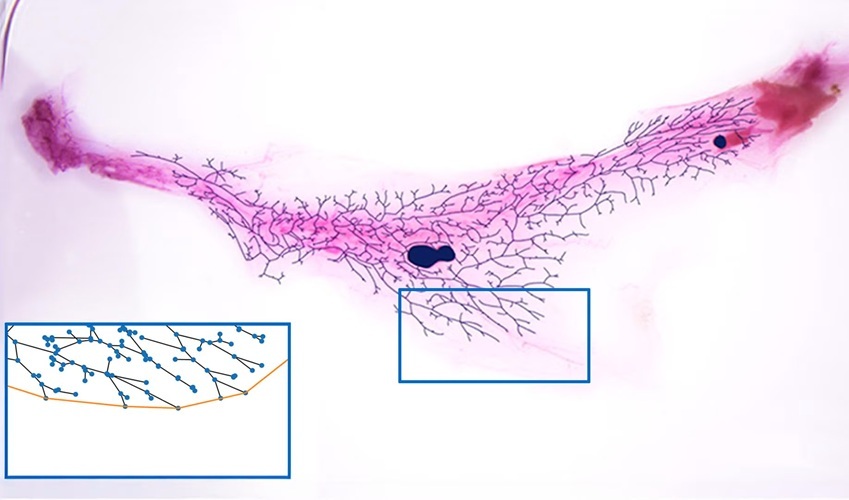
Automated Tool Detects Early Warning Signs of Breast Cancer
Branching is a vital biological process that enables organs like the lungs, kidneys, and breasts to perform complex functions. In female mammary glands, most branching occurs after birth—during puberty... Read more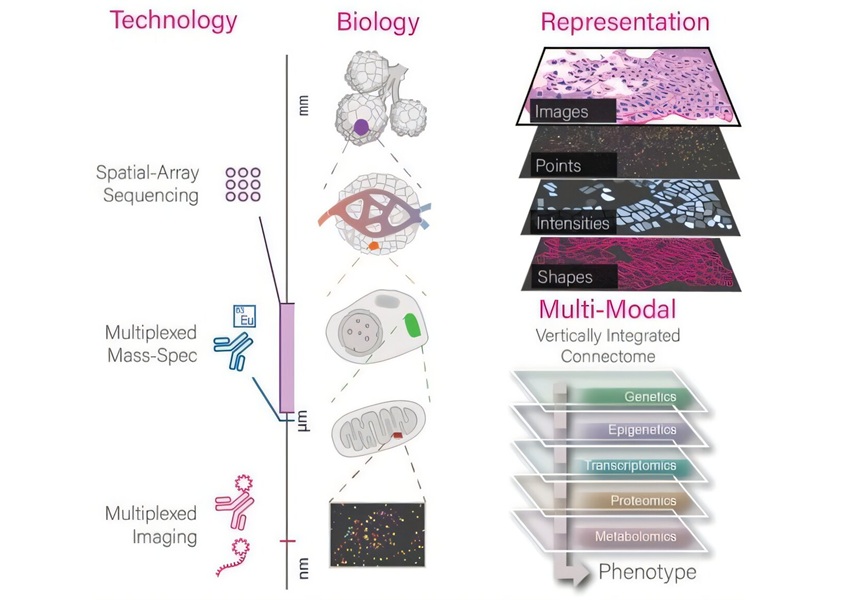
New Software Tool Improves Analysis of Complex Spatial Data from Tissues
Advances in spatial omics have enabled scientists to map the distribution of RNA and proteins within intact tissues, offering powerful insights into how cells behave and interact in both health and disease.... Read more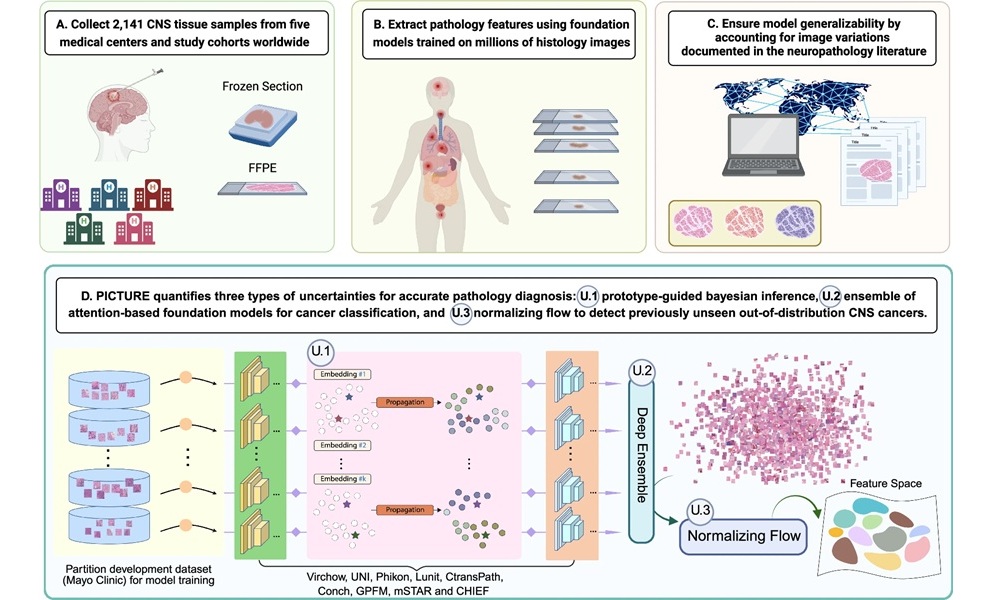
AI Tool Helps Surgeons Distinguish Aggressive Glioblastoma from Other Brain Cancers in Real-Time
Accurately distinguishing between brain tumors during surgery is one of the toughest diagnostic challenges in neuro-oncology. Glioblastoma, the most common and aggressive brain tumor, often appears similar... Read moreTechnology
view channel
Taste-Based Influenza Test Could Replace Nasal Swabs with Chewing Gum
Influenza is one of the most dangerous infectious diseases worldwide, claiming around half a million lives each year. What makes it particularly insidious is that flu viruses are contagious even before... Read more
3D Micro-Printed Sensors to Advance On-Chip Biosensing for Early Disease Detection
Early-stage disease diagnosis depends on the ability to detect biomarkers with exceptional sensitivity and precision. However, traditional biosensing technologies struggle with achieving this at the micro-scale,... Read moreIndustry
view channel
Terumo BCT and Hemex Health Collaborate to Improve Access to Testing for Hemoglobin Disorders
Millions of people worldwide living with sickle cell disease and other hemoglobin disorders experience delayed diagnosis and limited access to effective care, particularly in regions where testing is scarce.... Read more
Revvity and Sanofi Collaborate on Program to Revolutionize Early Detection of Type 1 Diabetes
Type 1 diabetes (T1D) is a lifelong autoimmune condition in which the immune system destroys the pancreas’s insulin-producing beta cells, leading to dependence on insulin therapy. Early detection is critical... Read more














